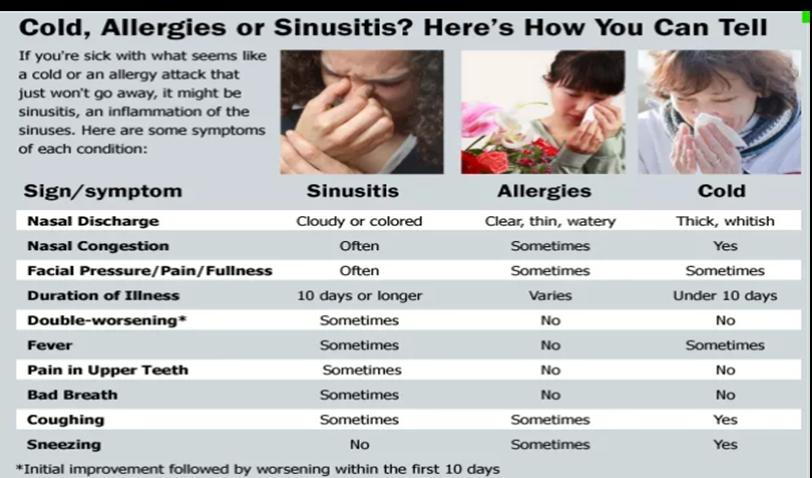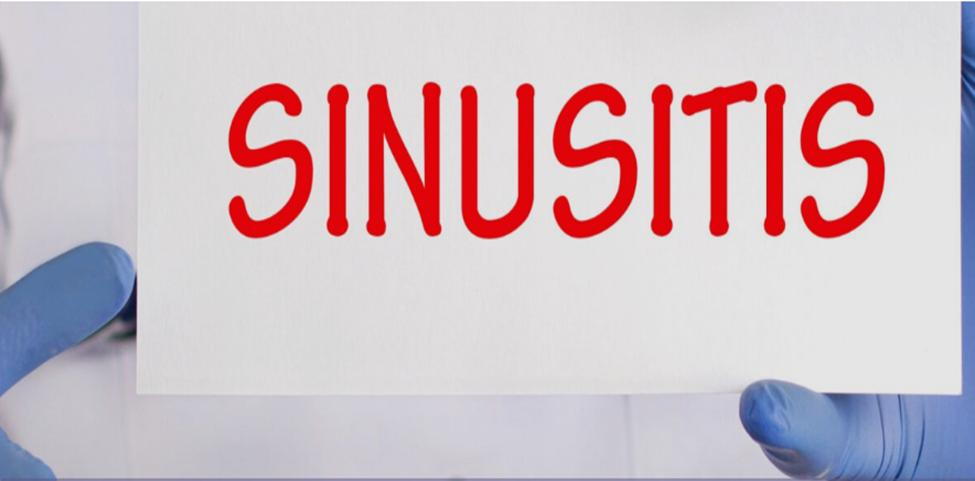

A sinus infection is when the contents of the sinuses become backed up and infected. The cavities around the nasal passages become inflamed. Sometimes, they come with bad headaches or runny noses with yellow, green or brown mucus.
Fall is a common time of year for sinus infections due to types of seasonal pollen like ragweed, HVAC systems and the start to school, where viruses are more easily passed from one person to another. Allergies cause sinus infections by increasing inflammation and swelling inside the nose. When the nose is stuffy, it isn’t able to warm, filter or moisturize the air you breath and sinuses cannot drain as they should to keep you healthy. Mucus that remains in the sinuses can become a breeding ground for bacteria and viruses. Even though they occur year-round, they are more evident during the fall and winter seasons.
The most common causes of sinus infections being allergies, colds, and flus are more increased thus causing an increase in sinus infections as well. Ragweed pollen (which is stirred up during leave raking) and mold (found in decaying vegetation) are very dominant in the fall causing allergy symptoms to increase. In the winter people spend more time indoors where the air is recycled and drier, and we are all in closer contact.
Sinus Infection vs. Cold
Distinguishing between the common cold and sinus infections can be challenging for patients and healthcare providers alike. The two conditions share many characteristics, and in some cases, sinus infections arise as a complication of colds. However, there are several key differences:
- Causes: The common cold arises due to infection from any of 200 viruses, with rhinovirus being the most common. While viral infections also cause most sinus infections, more severe types arise due to bacteria exposure. Additionally, allergies and nasal polyps (growths) in the sinuses may increase the risk of developing sinusitis.
- Duration: Whereas cold symptoms generally start to improve after three to five days, sinusitis, especially if it's bacterial, lingers longer or doesn’t resolve at all. If symptoms last 10 or more days without getting any better, it’s likely your cold is a sinus or other kind of infection.
- Sinus pressure/facial pain: While you may experience some sinus pressure with common colds, this is a frequent sign of sinus infection. Facial pain and tenderness can also arise due to this congestion.
- Mucus: While the mucus produced when you have a cold is typically clearer, sinus infection produces thicker, yellowish, or green discharges. Bacterial sinus infections cause your nose to produce a pus-like discharge.
- Symptoms: In addition to cold symptoms, sinus infections can cause loss of sense of taste or smell, higher fever, fatigue, and aches in the body. Fever is more prominent with sinus infections and may or may not occur with common cold cases. Halitosis (bad breath) is another sign of sinus infection
 PHOTO SOURCE: American Academy of Otolaryngology-Head and Neck Surgery
PHOTO SOURCE: American Academy of Otolaryngology-Head and Neck Surgery
What can I do to prevent sinus infections in my child or myself?
To prevent sinus infections, keep your nose clear and regularly wash your hands with soap and warm water. A daily nasal steroid spray or saline lavage can be helpful to control a stuffy nose.
When to see a doctor for your sinus infection
Make an appointment with a doctor if you have severe symptoms, or if the following symptoms last longer than 10 days or keep coming back:
- fever
- nasal discharge
- congestion
- facial pain
Because the cause of your sinus infection can affect your treatment options, it’s important to see a doctor for a diagnosis.
If you believe you have chronic or recurring sinusitis, consider asking for a referral to an otolaryngologist, also known as an ear, nose, and throat (ENT) specialist. You may need imaging and other tests to determine the cause of your symptoms.
The ENT specialist can examine the sinuses more closely and look for any problem in the structure of the nasal passages that could lead to chronic sinus problems.
A fever is not a typical symptom of either chronic or acute sinusitis, but it is possible. You could have an underlying condition that is causing your chronic infections, in which case you may need special treatment.
Conditions causing your chronic infections may include:
- nasal polyps
- deviated septum
- allergies
- other medical conditions
A doctor can try to figure out the cause of your sinus infection and offer options for treatment.
See a doctor immediately if you experience any symptoms of a more serious infection, such as:
- a fever over 103°F (39.4°C)
- confusion
- stiff neck
- changes in vision
- other related symptoms that are concerning or severe

